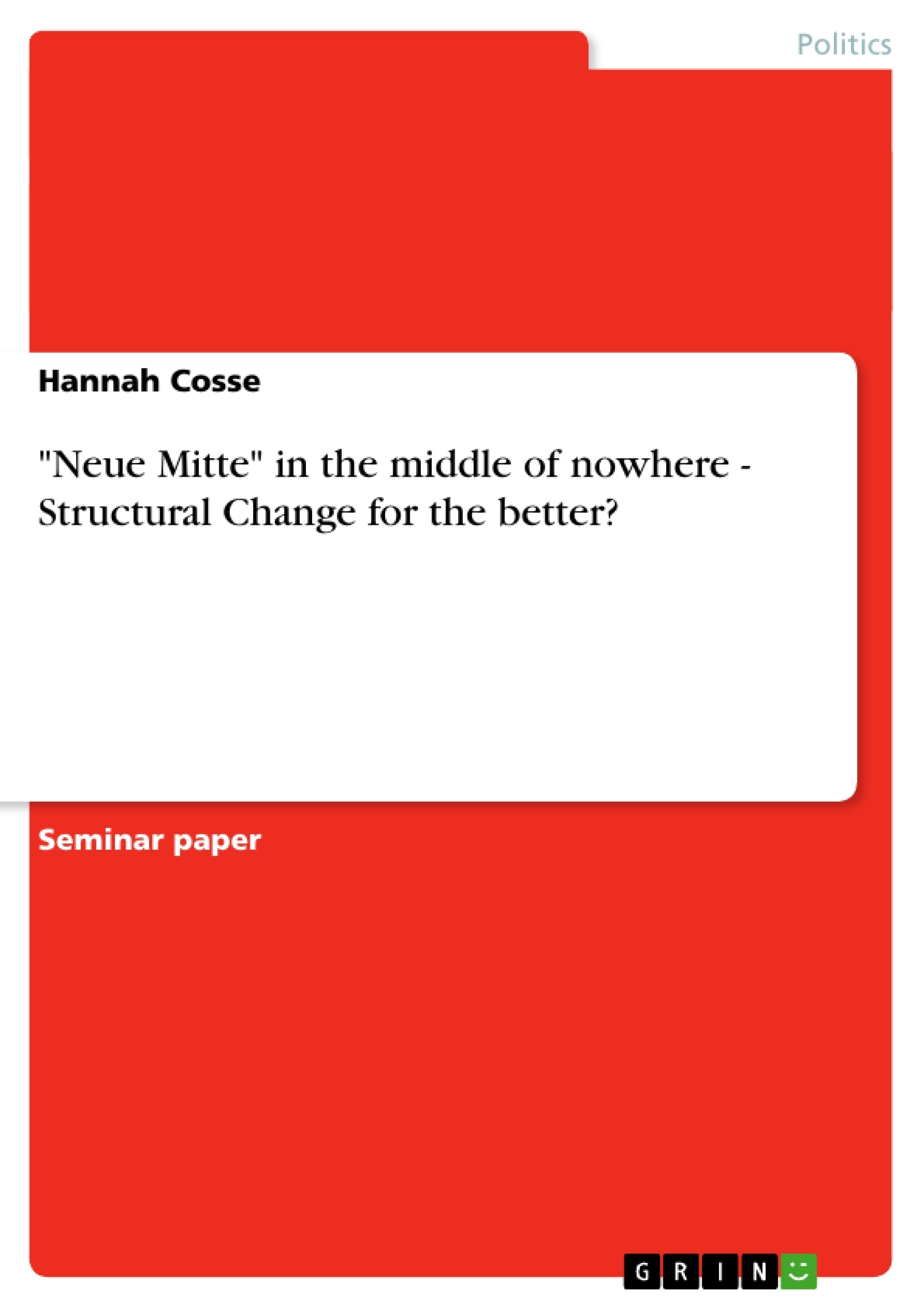Economy is determined by dynamic processes. Structural change in the Ruhr Area is symptomatic for Europe’s manufacturing regions. Grown on the base of heavy industry during industrialisation, a consumption and productivity crisis influenced the whole economy of the region. High unemployment rates and the closing down of factories and mines recoined the image of the area. Today structural change led the region towards high-tech, culture and leisure facilities. Structural change has consequences on workers, inhabitants and the region’s economy as a whole. Impacts can be either negative or positive. Planners must keep these consequences in mind while planning a new project for structural change. Oberhausen’s structural change was really successful. The “Neue Mitte” created 10000 new jobs, Oberhausen became a growth pole for consumption and leisure facilities. Nevertheless new problems arose. Purchasing power that was attracted by the CentrO has had negative impacts on cities in vicinity and also on the city centre of Oberhausen itself, which results in a Zero-Sum-Game.
The regional structural change framework shows that supply and demand factors are the starting points of a regions economic performance. This performance is influenced as well by institutional factors as by the grade of diversity of the economy. In the Ruhr Area and in Oberhausen local governments first acted too late to absorb the decline of the industry (constraints), then they set up projects to emphasize the change (incentives). The “Neue Mitte” shows that structural change needs diversity, otherwise a new dependent mono-structure develops, which is again vulnerable and likely to break down.
Responsibility, diversity and balance are the features of successful structural change. Of course, economy is not all about people in the calculations of companies, but without people there would simply be no economy. Change must focus on the needs of people; otherwise it is development “in the middle of nowhere”.
Inhaltsverzeichnis (Table of Contents)
- Summary
- I. Introduction and Methodology
- 1. Introduction
- 2. Methodology
- II. Structural Change for the better?
- 1. Structural Change in the Ruhr Area
- 1.1. Historical Development
- 1.2. Social Consequences
- 1.3. Image
- 2. Structural Change in Oberhausen
- 2.1. Historical Development
- 2.2. Neue Mitte
- 2.2.1. Problems of structural change in Oberhausen
- 2.2.2. Coping with negative developments
- 2.3. Regional Structural change framework
- 3. Critical view on structural change
- 1. Structural Change in the Ruhr Area
- III. Conclusion
Zielsetzung und Themenschwerpunkte (Objectives and Key Themes)
This paper investigates the impacts of structural change on a specific region, particularly focusing on the Ruhr Area and the city of Oberhausen in Germany. The paper aims to analyze the process of transformation from industrial production to service-based economies, examining the benefits and drawbacks for the region and its inhabitants.
- The historical development and social consequences of structural change in the Ruhr Area
- The case study of Oberhausen's transformation from a steel-producing city to a center for consumption and leisure
- The regional structural change framework and its application to the analysis
- A critical examination of the potential benefits and drawbacks of structural change
- The role of government and industry in facilitating successful structural change
Zusammenfassung der Kapitel (Chapter Summaries)
The paper begins by introducing the concept of structural change in the context of European integration, particularly focusing on the decline of heavy industries, including coal and steel, in the Ruhr Area. The introduction highlights the late reactions of the government and industry to this decline, resulting in a crisis for the region.
Chapter II delves into the historical development, social consequences, and image of the Ruhr Area in the face of structural change. It examines how the area transformed from a dominant industrial hub to a region struggling with high unemployment rates and a shift towards service-based economies. The chapter then focuses on the specific case of Oberhausen, tracing its historical development and the construction of the "Neue Mitte," a major project aimed at attracting consumption and leisure activities.
The chapter continues by analyzing the problems associated with Oberhausen's structural change, including the negative impacts on surrounding cities and the city center itself. It also discusses the efforts to address these issues and introduces the regional structural change framework, highlighting the importance of supply and demand factors, institutional frameworks, and diversity in driving economic performance.
Chapter III offers a critical view of structural change, discussing the need for balance, responsibility, and diversity to ensure successful transitions. It emphasizes that structural change should focus on the needs of people and avoid creating dependency on new mono-structures that are potentially vulnerable.
Schlüsselwörter (Keywords)
This paper explores the complex topic of structural change, examining its implications on regional economies, societies, and individuals. Key terms include the Ruhr Area, Oberhausen, Neue Mitte, industrial decline, service-based economy, consumption, leisure facilities, regional structural change framework, diversity, responsibility, balance, and the need to address the needs of people in the context of economic transformations.
- Quote paper
- Hannah Cosse (Author), 2005, "Neue Mitte" in the middle of nowhere - Structural Change for the better?, Munich, GRIN Verlag, https://www.grin.com/document/65881



